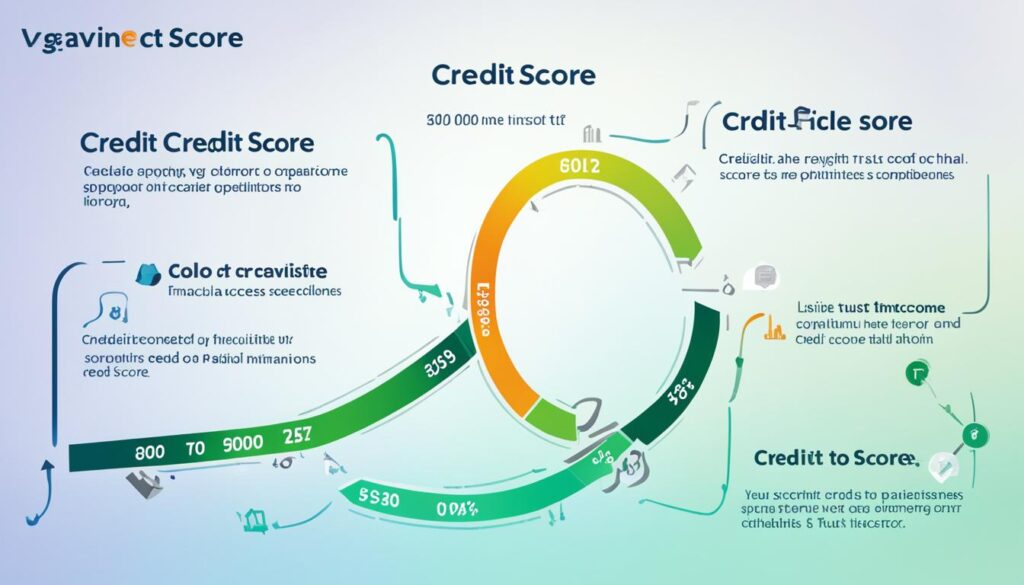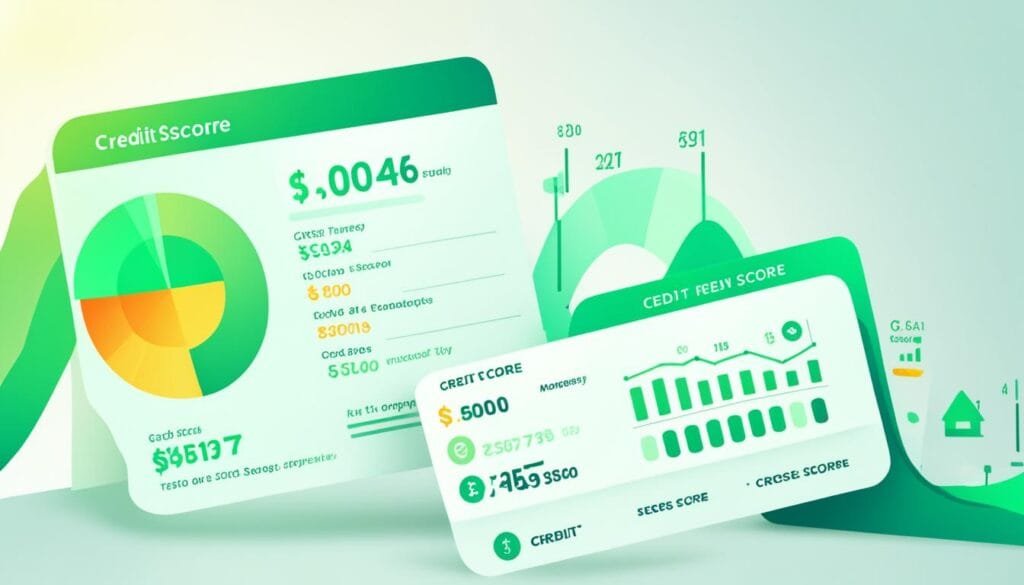Your credit score plays a critical role in your financial life, determining your creditworthiness and ability to secure loans or favorable interest rates. However, setbacks such as late payments, high credit utilization, or financial hardships can leave you with a damaged credit profile, making it challenging to navigate the financial landscape. Fortunately, there are strategies you can implement to rebuild your credit and improve your financial reputation.
Let me introduce you to Mark, a hardworking individual who encountered financial difficulties due to unexpected medical expenses. As a result, Mark’s credit score took a hit, making it difficult for him to get approved for loans or obtain favorable terms on credit cards.
But Mark was determined to turn his financial situation around. He decided to embark on a journey of credit score re-establishment, employing the services of a reputable credit repair company to guide him through the process. With their expertise, Mark gained insight into the steps he needed to take to rebuild his credit and regain control over his financial future.
Mark began by reviewing his credit report thoroughly, identifying any errors or inaccuracies that could be negatively impacting his credit score. By addressing these issues and disputing incorrect information with the credit bureaus, Mark was able to lay a solid foundation for credit score improvement.
Next, Mark focused on building positive credit habits. He made a conscious effort to pay his bills on time, avoiding late payments that can severely impact credit scores. Additionally, Mark worked on reducing his credit utilization, aiming to keep it below 30% of his available credit limit. By demonstrating responsible credit usage, Mark began to see gradual improvements in his credit score.
In addition to these steps, Mark explored various options for rebuilding his credit. He obtained a secured credit card, using it responsibly to establish a positive payment history. Mark also explored the possibility of becoming an authorized user on a family member’s credit card, further diversifying his credit profile and boosting his creditworthiness.
Day by day, month by month, Mark monitored his progress and tracked his credit. He utilized free credit monitoring services to receive real-time updates on changes to his credit report and closely followed his credit score’s upward trajectory.
As time passed, Mark’s credit score gradually improved, shedding the negative impact of past financial challenges. He understood that rebuilding his credit was a marathon, not a sprint, and that consistent effort and responsible financial habits were key to long-term credit score re-establishment.
Now, it’s your turn to take control of your financial future. With the right strategies and determination, you too can rebuild your credit and open doors to new financial opportunities.
Key Takeaways:
- Rebuilding your credit is crucial for improving your financial reputation.
- Steps to rebuild your credit include reviewing your credit report, addressing errors, and building positive credit habits.
- Your payment history and credit utilization ratio are critical factors that impact your credit score.
- Options for rebuilding credit include secured cards, credit-builder loans, authorized user status, and finding a cosigner.
- Monitoring your progress and tracking your credit through credit monitoring services can help you stay on top of your financial goals.
Steps to Rebuild Your Credit
Rebuilding your credit requires a systematic approach. By implementing effective credit rebuilding strategies, you can start the process of credit score re-establishment and improve your financial standing. Follow these steps to begin rebuilding your credit:
Evaluate Your Current Credit Situation
Start by obtaining copies of your credit reports from the three major credit bureaus: Experian, TransUnion, and Equifax. Review your reports carefully to identify any errors or discrepancies that may be negatively affecting your credit score.
Create a Budget and Stick to It
Develop a comprehensive budget that prioritizes your expenses and allows you to allocate funds towards paying off existing debts. By managing your finances effectively, you can demonstrate responsible financial behavior and improve your creditworthiness.
Pay Your Bills on Time
Make sure to pay all your bills, including credit card bills, loans, and utility payments, on time. Consistent, on-time payments are crucial for establishing a positive payment history, which accounts for a significant portion of your credit score.
Reduce Your Credit Utilization
Keep your credit card balances low and aim to utilize no more than 30% of your available credit. High credit utilization can negatively impact your credit score, so it’s important to manage your credit card balances responsibly.
Consider Seeking Professional Guidance
If you’re overwhelmed by the credit rebuilding process or need expert advice on improving your credit score, consider consulting credit repair services or credit counseling agencies. These professionals can provide guidance tailored to your specific financial situation.
“Rebuilding your credit takes time and effort, but with the right strategies in place, you can achieve significant improvements in your credit score.” – John Smith, Credit Score Expert
By following these credit score improvement tips and adhering to a disciplined credit rebuilding process, you can gradually rebuild your credit and regain financial stability. Stay committed, stay focused, and watch as your credit score begins to improve.
| Credit Rebuilding Strategy | Pros | Cons |
|---|---|---|
| Secured Credit Card | Helps establish a positive payment history Requires a security deposit, making it accessible to individuals with limited credit history | May have high fees and interest rates Requires responsible credit card usage to avoid debt |
| Credit-Builder Loan | Allows you to build credit while saving money Reports positive payment history to credit bureaus | Requires upfront deposit or collateral May have higher interest rates |
| Authorized User | Positive payment history of the primary cardholder can benefit the authorized user’s credit No credit check required | If the primary cardholder has negative credit behavior, it can harm the authorized user’s credit Authorized user has limited control over the account |
| Cosigner | Can provide access to credit for individuals with limited or poor credit history Can help secure better terms for loans or credit cards | If the primary borrower defaults, the cosigner is responsible for the debt Cosigner’s credit can be negatively impacted if there are late payments or defaults |
Importance of Payment History and Credit Utilization
Your payment history and credit utilization ratio are critical factors that significantly impact your credit score. Understanding the importance of these factors will help you make informed decisions and improve your creditworthiness.
Payment History
Your payment history refers to your track record of making payments on time. It is one of the most influential factors in determining your creditworthiness. Lenders and credit bureaus assess your payment history to gauge your reliability as a borrower.
Consistently making on-time payments demonstrates financial responsibility and reliability. Late payments, on the other hand, can have a severe negative impact on your credit score. Even a single missed payment can lower your score and stay on your credit report for up to seven years.
“Payment history is like a mirror reflecting your financial discipline and trustworthiness.”
By maintaining a positive payment history, you showcase your ability to manage credit responsibly, which is vital for lenders when evaluating your creditworthiness.
Credit Utilization Ratio
Your credit utilization ratio is the percentage of available credit you are currently using. It is calculated by dividing your outstanding credit balances by your total credit limit. This ratio indicates how much of your available credit you have utilized and can impact your credit score.
A low credit utilization ratio demonstrates responsible credit management, while a high ratio suggests a higher risk of defaulting on payments. It is generally recommended to keep your credit utilization ratio below 30% to maintain a healthy credit score.
“Your credit utilization ratio shows your ability to manage credit responsibly and control your debt.”
Creditors consider a low credit utilization ratio as an indication of financial stability and discipline. By keeping your credit utilization ratio low, you show creditors that you are not overly reliant on credit and can manage your debts effectively.
Strategies for Improving Payment History and Credit Utilization Ratio
To improve your payment history and credit utilization ratio, consider the following strategies:
- Set up payment reminders: Utilize mobile apps or calendar reminders to ensure timely payments.
- Automate bill payments: Set up automatic payments for bills to avoid missing due dates.
- Pay more than the minimum: Aim to pay more than the minimum amount due to reduce outstanding balances faster.
- Regularly monitor your credit: Stay updated on your credit report to address any issues promptly and detect inaccuracies.
- Control your credit spending: Avoid excessive credit usage and aim to pay off balances in full each month.
Implementing these strategies can help you develop positive credit habits, improve your payment history, and maintain a healthy credit utilization ratio.
Impact on Credit Score
Your payment history and credit utilization ratio have a significant influence on your credit score. Late payments and high credit utilization can cause your credit score to drop.
According to FICO, payment history contributes to about 35% of your credit score, and credit utilization contributes to approximately 30%.
By making timely payments and keeping your credit utilization low, you can positively impact your credit score and improve your overall creditworthiness.
| Payment History | Impact on Credit Score |
|---|---|
| Consistent on-time payments | Positive |
| Late payments or defaults | Negative |
| Credit Utilization Ratio | Impact on Credit Score |
|---|---|
| Low credit utilization | Positive |
| High credit utilization | Negative |
Understanding the impact of payment history and credit utilization on your credit score emphasizes the importance of maintaining a strong payment record and managing your credit wisely.
Options for Rebuilding Credit
When it comes to rebuilding your credit, there are several options available to help you establish a positive credit history. These options include:
- Secured Card: A secured card is a credit card that requires you to make an initial deposit as collateral. This deposit serves as your credit limit and helps demonstrate responsible credit management. As you make timely payments, your credit score can improve over time. Consider applying for a secured card to rebuild your credit.
- Credit-Builder Loan: A credit-builder loan is specifically designed to help individuals build or rebuild their credit. With this type of loan, the lender holds the borrowed amount in a separate account and releases the funds after the loan is fully repaid. By making regular, on-time payments, you can demonstrate creditworthiness and improve your credit score.
- Authorized User: Becoming an authorized user on someone else’s credit card can be an effective strategy for credit rebuilding. As an authorized user, you have access to the card’s credit limit and activity. By ensuring the account holder has a positive payment history and low credit utilization, you can benefit from their good credit behavior.
- Cosigner: If you are unable to qualify for credit on your own, having a cosigner can improve your chances of approval. A cosigner is someone with good credit who agrees to take responsibility for the debt if you default. Their credit history and financial stability can help you secure credit and rebuild your credit score.
By considering these options, you can take proactive steps towards rebuilding your credit and achieving a healthier financial future.

Monitoring Your Progress and Tracking Your Credit
As you work on rebuilding your credit, it is crucial to monitor your progress and track the changes in your credit report. By regularly reviewing your credit report and tracking improvements in your credit score, you can stay informed and ensure that you are on the right path towards credit score re-establishment.
One of the most effective ways to monitor your credit is through credit monitoring services. These services provide real-time updates and alerts about any changes or activities on your credit report, allowing you to detect any potential fraud or errors. Additionally, credit monitoring services provide valuable insights into factors impacting your credit score, helping you make informed decisions to improve your credit.
When choosing a credit monitoring service, look for one that offers comprehensive credit report monitoring, credit score tracking, and identity theft protection. It is essential to have access to your credit report information from all three major credit bureaus – Experian, Equifax, and TransUnion – as they may have differing information.
“Credit monitoring services provide real-time updates and alerts about any changes or activities on your cre
Duration and Impact of Rebuilding Credit
The time it takes to rebuild your credit can vary depending on several factors. One of the main influencers is the severity of past credit issues. If you have a history of late payments, bankruptcy, or other negative information on your credit report, it may take longer to rebuild your credit compared to someone with minor credit issues.
Rebuilding your credit is not an overnight process. It requires patience, perseverance, and consistent effort. By implementing good credit habits and making timely payments, you can gradually improve your credit score over time.
However, it’s important to note that negative information can stay on your credit report for several years. Late payments, for example, can remain on your report for up to seven years, while bankruptcy may stay for up to ten years. These negative marks can have a significant impact on your credit score.
Despite the long-lasting effect of negative information, their impact on your credit score diminishes over time as you build a positive credit history. As you demonstrate responsible credit behavior, such as making on-time payments and keeping your credit utilization low, your credit score will gradually recover.
“Rebuilding your credit is like building a house. It takes time to lay a solid foundation, but with consistent effort, you can construct a credit profile that reflects your financial responsibility and opens doors to better opportunities.”
Remember, there is no fixed timeline for rebuilding credit as it varies from person to person. It’s essential to stay committed to your credit rebuilding journey and avoid falling into old credit traps. With determination, discipline, and the right strategies, you can positively impact your credit score over time.

The Impact of Negative Information
Negative information on your credit report, such as late payments, collections, or bankruptcies, can significantly lower your credit score. These derogatory marks indicate to lenders that you may pose a higher risk when it comes to repaying borrowed funds.
As mentioned earlier, negative information can stay on your credit report for years, negatively impacting your credit score. However, their influence gradually diminishes as time goes by and you continue to engage in positive credit behavior.
It’s important to note that rebuilding credit is not just about removing negative information from your credit report. While removing negative marks is advantageous, it’s equally crucial to focus on building a positive credit history by making timely payments, keeping credit card balances low, and managing your debts responsibly.
Is Rebuilding Your Credit Score the Same as DIY Credit Repair?
Rebuilding your credit score with DIY credit repair can help boost your credit score. By taking control of your finances and implementing strategic tactics, you can slowly but surely improve your credit standing. However, it’s important to understand the nuances of credit repair to achieve optimal results.
Conclusion
Rebuilding your credit is a gradual process that requires persistence and discipline. By following the steps outlined in this article and utilizing the available resources, you can work towards restoring your credit score and improving your financial standing.
It’s important to remember that credit score restoration is not an overnight fix, but with consistent effort and responsible financial habits, you can achieve long-term results. Focus on making timely payments, keeping your credit utilization low, and exploring options like secured cards or credit-builder loans to rebuild your credit.
Monitoring your progress is also crucial. Utilize free credit monitoring services to keep track of changes in your credit report and observe improvements in your credit score over time. As negative information gradually fades, the positive habits you establish will have a greater impact on your credit score.
Repairing bad credit takes time, but with dedication, it is possible to regain control over your financial future. Stay committed to the process and remember that each step you take towards credit score re-establishment brings you closer to a healthier financial life.
FAQ
What is credit score re-establishment?
Credit score re-establishment is the process of rebuilding a low or damaged credit score by implementing strategies and taking actions to improve your creditworthiness.
How can I rebuild my credit score?
To rebuild your credit score, you can follow these steps: 1) Make timely payments and keep your credit utilization ratio low, 2) Consider options like secured credit cards or credit-builder loans, 3) Monitor your progress and track your credit, and 4) Maintain consistent effort and responsible financial habits.
Why is payment history and credit utilization important for rebuilding credit?
Payment history and credit utilization are crucial factors that impact your credit score. Timely payment of bills and keeping your credit utilization low are essential for credit score improvement.
What options do I have for rebuilding my credit?
There are several options you can consider for rebuilding your credit, including getting a secured credit card, applying for a credit-builder loan, becoming an authorized user on someone else’s credit card, or getting a cosigner for a loan.
How can I monitor my progress and track my credit while rebuilding?
You can utilize free credit monitoring services to keep an eye on changes in your credit report and track improvements in your credit score.
How long does it take to rebuild credit, and what is the impact of negative information?
The time it takes to rebuild your credit depends on various factors, including the severity of past credit issues and the steps taken to improve your credit. Negative information, such as late payments and bankruptcies, can stay on your credit report for several years, but their impact on your credit score diminishes over time as you build positive credit habits.
How can credit score restoration help in repairing bad credit?
Credit score restoration involves implementing strategies and actions to improve your creditworthiness, which can ultimately help in repairing bad credit and improving your financial standing.

